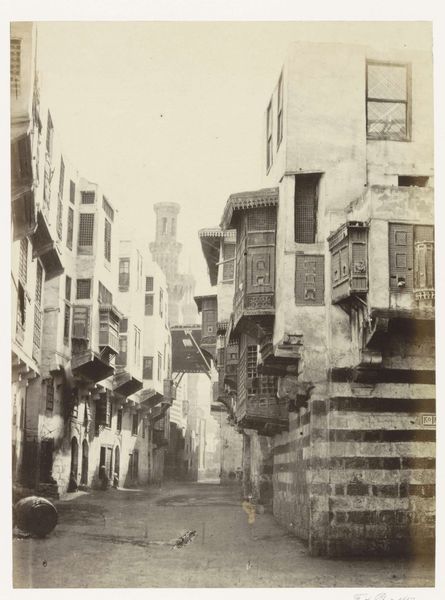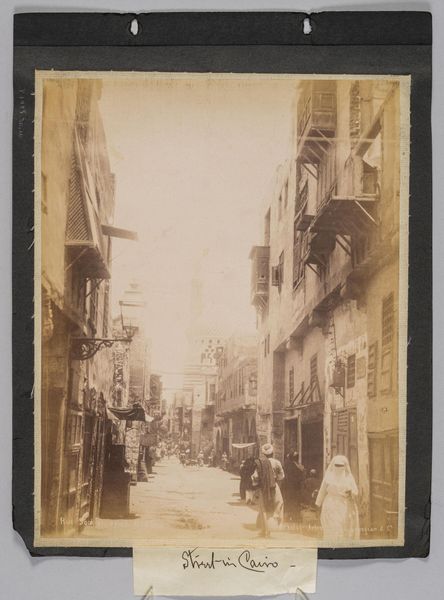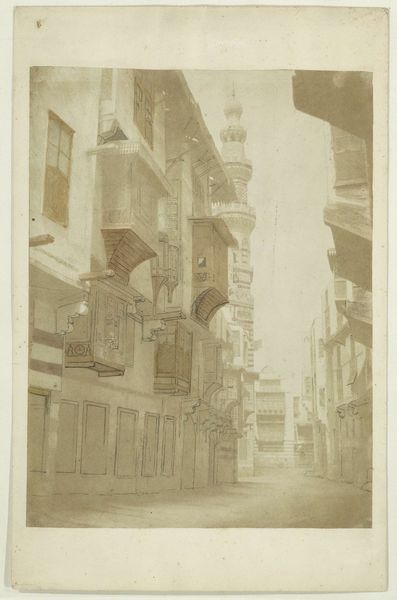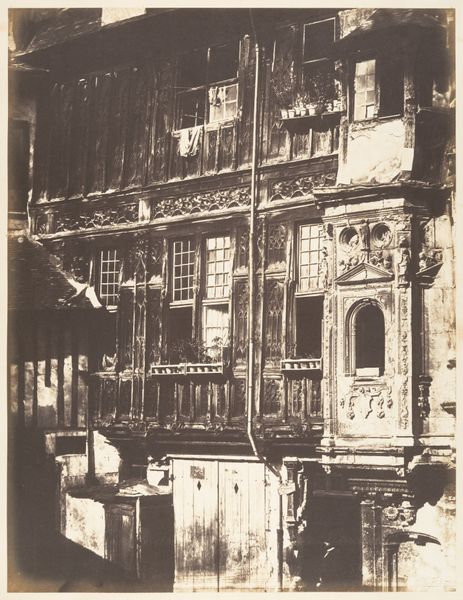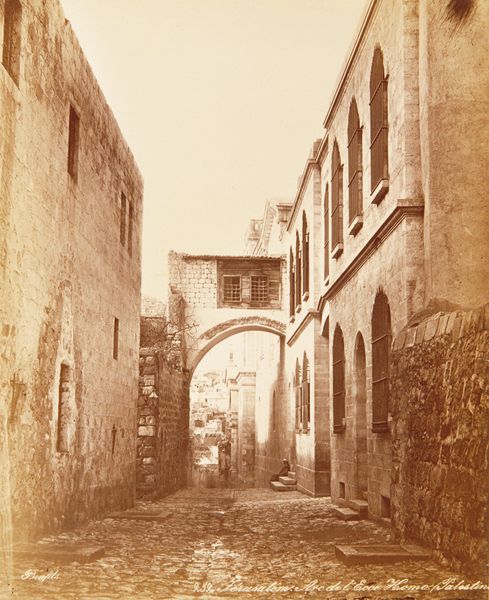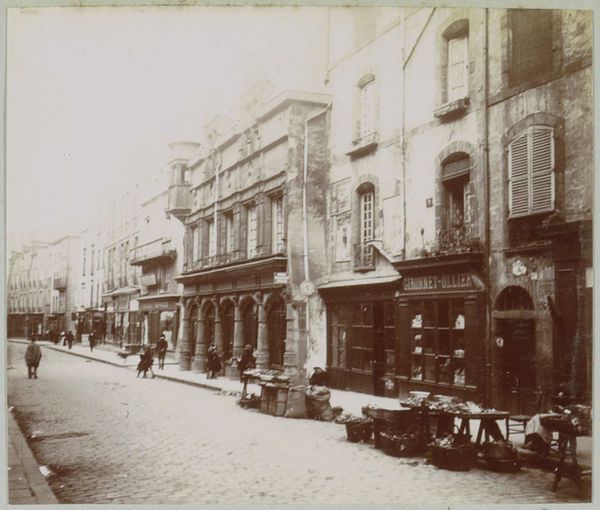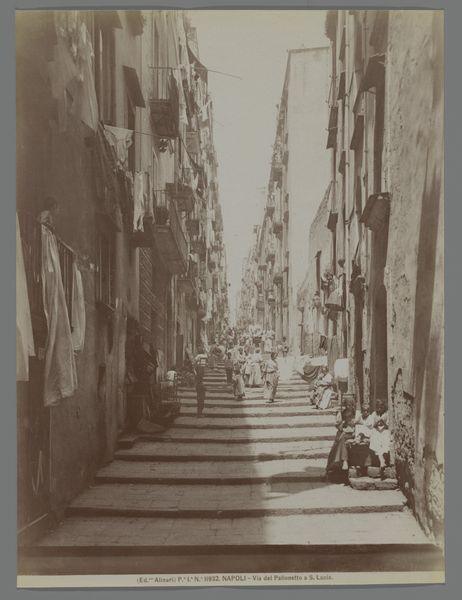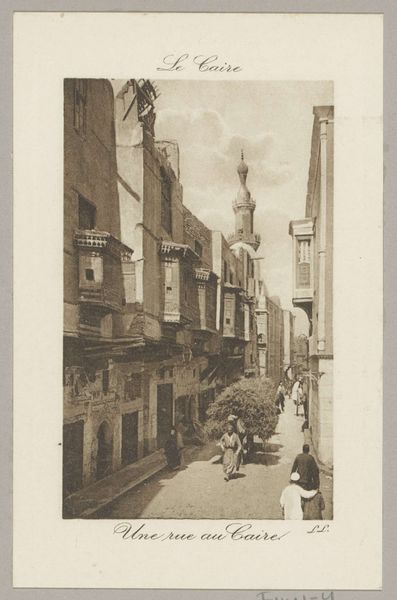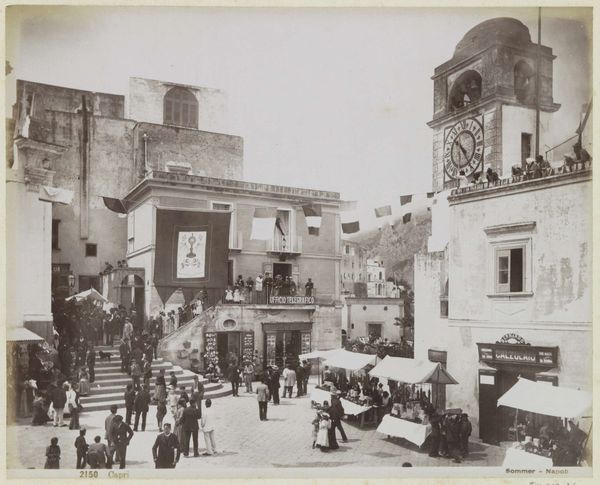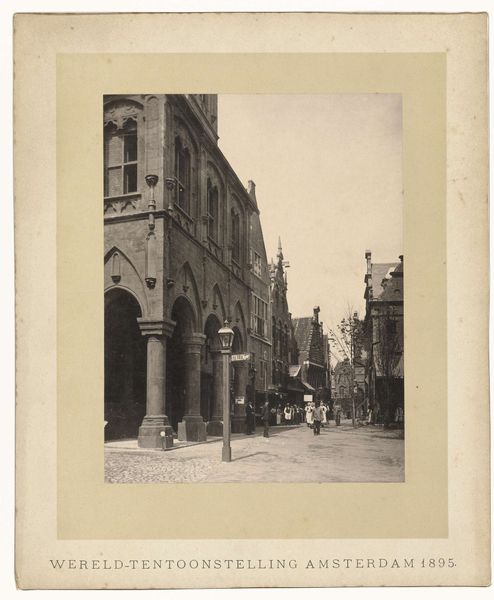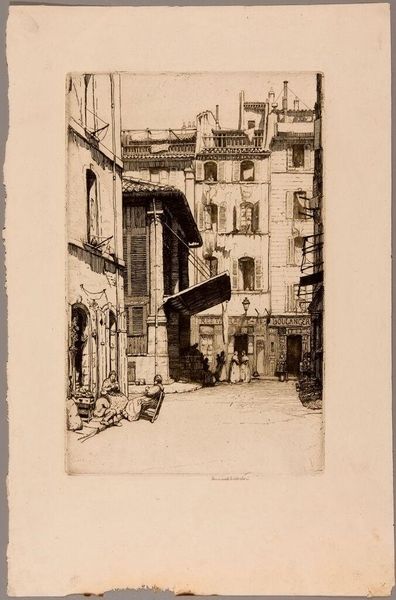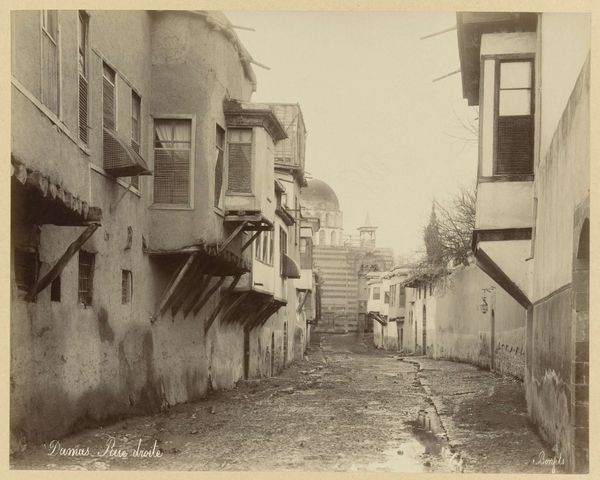
albumen-print, photography, albumen-print, architecture
#
albumen-print
#
historic architecture
#
street-photography
#
traditional architecture
#
photography
#
city scape
#
ancient-mediterranean
#
cityscape
#
islamic-art
#
albumen-print
#
architecture
Dimensions: 11 1/16 x 8 5/8 in. (28.1 x 21.91 cm) (image)13 7/8 x 10 7/8 in. (35.24 x 27.62 cm) (mount)
Copyright: Public Domain
Editor: Here we have Fèlix Bonfils' "Rue du Caire" from the 19th century, captured with the albumen print process. It’s a pretty stunning cityscape. What strikes me most is the sense of depth and how the architecture seems to lean in on the street, almost like it's whispering secrets. How do you interpret this work? Curator: That's a lovely observation about the whispers. The albumen print, with its sepia tones, gives the scene a patina of antiquity, enhancing that feeling. For me, the real power lies in the symbolism inherent in the architecture itself. Look at the intricate details of the mashrabiya—the oriel windows. Editor: Yes, those lattice screens are incredibly detailed! Curator: Exactly. These weren't merely decorative; they served a vital social and cultural function, allowing women to observe the street life below without being seen, mediating private and public spaces. They are a visual manifestation of cultural norms. Don't you feel it's fascinating how this architectural element tells a story about societal roles and visual boundaries? Editor: I do. It’s almost like a physical embodiment of cultural memory, the way they controlled visibility… So, beyond the mashrabiya, what other visual cues do you find particularly telling? Curator: Notice the juxtaposition of decay and artistry, the way the structures reveal layers of history, and the use of light and shadow to emphasize form and texture, revealing its symbolism over time. Editor: I see what you mean. It's more than just a photograph of a street. Curator: Precisely! It's a layered document, a visual echo of lives lived and beliefs held. Editor: It’s like Bonfils wasn't just capturing a place, but also capturing the essence of a culture. Curator: And allowing future generations to remember it in a particular way. Editor: I'll definitely look at historical photographs differently now!
Comments
No comments
Be the first to comment and join the conversation on the ultimate creative platform.

